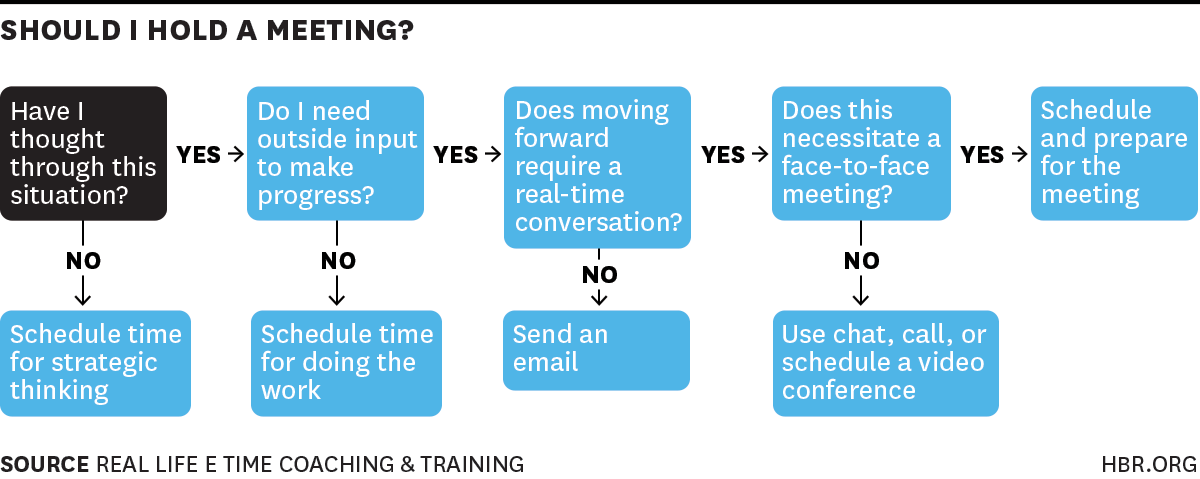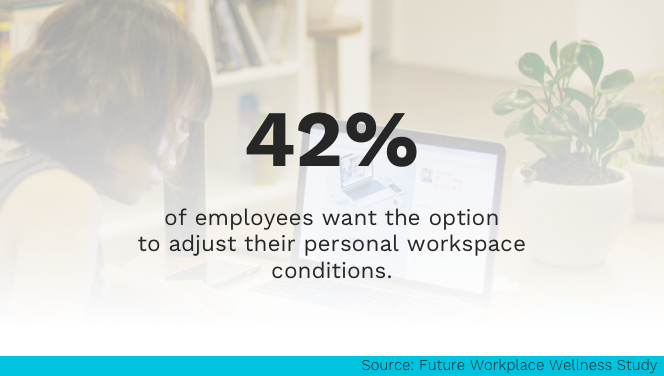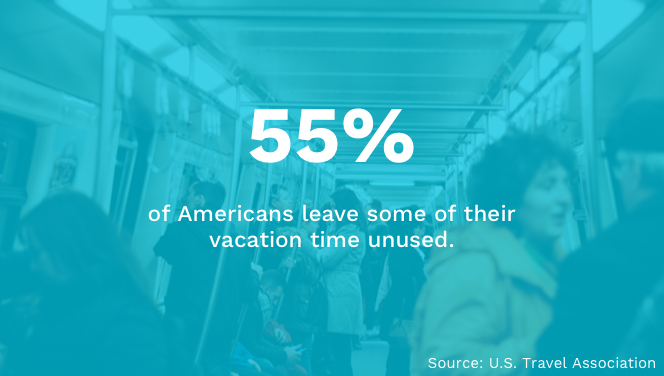Well, well, well! 2020 has arrived, and so have countless resolutions, trendy products, and savvy diet plans to help us take on the new decade with good health at the helm. There are so many, in fact, that it can feel difficult to know where to begin.
In fact, wellness has a lot more to do with small habits, thoughtful choices, and intentional time management than sugar cereal makeovers or luxury skin treatments. The decisions we make in the workplace, for both ourselves and our teammates, are just as critical to our joy as those we make at home.
But let’s get down to real impact: does workplace wellness really make a difference? Will it improve your health, your business, your team, or your bottom line?
The U.S. Chamber of Commerce says yes. Their Winning with Wellness report indicated that workplace wellness programs actively improve the health and wellbeing of employees, and can manifest themselves in many forms — clinics, seminars, health risk assessments, and community engagement are just the beginning.
The report also indicated that well-designed, intentional wellness initiatives have a return on investment of $1.50 to $3 per dollar spent over two to nine years. That’s an ROI statistic that doesn’t begin to touch the immense impact that even small initiatives can make on workplace culture, productivity, and overall health.
Here are seven workplace wellness tips to help you and your employees thrive in 2020!
What’s in?
Like what you see?
Don’t miss out. Subscribe to our monthly digest to get the latest TA and TM resources delivered right to your inbox.
1. Start simple
If you’re in the unique (and lucky!) position to inspire, design, or build a wellness program for your workplace, be sure to remember that wellness is more of a marathon and not a sprint.
According to studies published in The Wellness Syndrome by Stockholm University’s Carl Cederstrom and City University London’s Andre Spicer, corporate wellness programs can rapidly become high pressure and introduce too much too fast. For example, an evaluation of office-mandated weight loss programs in the book confirmed only modest weight loss with unhealthy side effects—guilt and anxiety.
Of course, no one wants to incite negativity. It’s the very opposite of what workplace wellness programs aim for.
Be sure to consider your team, and what they truly need. What are you trying to achieve? As Spicer noted in an interview with the Harvard Business Review, “Look for small changes that can make a big difference. Too often people go all in on investments like treadmill desks when they could get the same payoff by giving their employees natural light, fresh air, and some fresh fruit.”
It helps to ask questions like these:
- Who works with you, and what are their interests and motivations?
- What roadblocks are derailing, demotivating, or disrupting your workplace environment?
- Has your team really embraced or been inspired by any wellness initiatives in the past? Do you have passionate advocates there already, just waiting to inspire?

Having an effective workplace wellness program will help you attract and retain employees.
2. Take a downtime
Whether you’re influential in managing your team’s time or just trying to make the most of your own schedule, you won’t be surprised to hear that we have become far too comfortable living in a constant state of stress. In fact, a Gallup poll cited stress alongside worry and anger as major influencers on the average person’s daily feelings.
Prolonged stress and anxiety can impact our physical wellbeing, and it’s not just the energy levels. Digestive problems, migraines, cardiovascular disease, and even prenatal concerns can all be traced back to stress, burnout and a need to always be “on.”
It’s time to take a break. After all, 2019 saw the World Health Organization officially classify workplace burn-out as an ‘occupational syndrome.’ Make a point to step away during the day with productive, healthful downtime — even in small ways and encourage your colleagues to do the same:
- Have a quick coffee with a direct report
- Take 15 minutes away from your screen to stretch
- Treat yourself to a walk before your next meeting
- Build a brief goal-setting or reading break into your daily schedule
3. Focus on your (work)flow
Taking intentional breaks throughout the day is directly related to the next workplace wellness tip: being mindful of your workflow. Does your meeting schedule actually help you to get more done? If the answer is no, what small tweaks can refresh your focus?
MIT Sloan Senior Lecturer Bob Pozen is a major advocate for results, not hours. In his book and interviews, he begins by focusing not on scheduling off time, but on optimizing productive time. Pozen asks, “What is the appropriate time period of concentrated work you can do before taking a break?”
For most humans, a full cycle of focus and energy runs out roughly every 90 minutes. After that, we need to allow the brain a rest, or time for “consolidation.” Pozen points to professional musicians, who work best in 90-minute practice sittings. These windows of energy, or sprints, can help maximize our impact and get more done with less.
Remember that time spent working isn’t a standard measure for success. Tune in to your own workflow, and make the most of it.
There are also numerous time management strategies and techniques that you can use to increase your overall productivity and reduce stress.

If you’re hesitating whether or not you should hold that meeting, take a look at this decision tree.
4. Make space for self-care
Whether your employees work from home, tuck themselves away in cubes, or spend their days in a sprawling office space, one thing is certain: the quality of the space impacts the quality of their day. Make it count!
There’s no right or wrong way to make your work area feel soothing. Interior Design calls user-centric design and customization 2020’s “forces to be reckoned with.” In short, the professional design community predicts that a customized workspace made to focus on unique users’ health and happiness will play a major role in our overall wellness. What does that look like?
For the furnishing and design experts at Room & Board, this meant a workspace with choices: outdoor spaces to meet and eat, and an indoor garden for rainy days. Standing desks, light therapy, and dedicated spaces for wellness all enhance their employees’ days. Nancy Greatrix, the company’s director of human resources, stands by the vital importance of this sort of workplace design thoughtfulness. She says, “Loving your work is just the beginning of living well. Today, the lines between work and life are blurred and wellness can have a positive impact on one’s entire life.”
For your personal space, maybe a lush, air-purifying plant could boost your mood. Perhaps a diffuser with soothing oils or a joyful, brightly colored piece of art could do the trick. Check out some ideas from Vogue for more inspiration!

This includes personalizing the workspace temperature, lighting, levels of natural light, or soundscaping.
5. Inspire joy in the workplace
We’ve all heard that change starts with us, and that’s particularly true of inspiring wellness and joy in the workplace. Laura Putnam, the founder and CEO of Motion Infusion, quite literally wrote the book on the matter: Workplace Wellness that Works.
Laura reminds us, time and again, that being an enthusiastic, passionate role model and advocate for positive practices, health, and happiness begins in our own space. Her ten-step process begins with “Shift Your Mind,” and encourages us to share our good vibes with those around us. Get managers and key stakeholders on board. Everyone can benefit from positive energy!
Take a look at PR Week’s Best Places to Work for 2019. In listing after listing, you’ll find references to “the culture,” “the people,” and “the leadership.” Each and every one of us contributes to crafting our work environment, and that’s the energy that can make the difference between a workplace that simply works and a workplace that thrives.
6. Unplug, recharge
It’s important to remember that managing time away from work is essential to keeping ourselves balanced all year long. Even a quick three-day weekend or a day off can help us all to disconnect, recharge, and be better workers.
Make yourself familiar with the travel trend of the micro-cation – a less-than-four-nights trip. Much adored by the Millennial set, it’s a great way to take advantage of paid time off without breaking the bank or blowing your schedule entirely out of whack. Encourage your employees to take two or three nights away to reset every few months.
Travel and Leisure advocates for these long weekends as a great getaway, and there’s no reason not to add it to the calendar now — after all, taking a series of short trips throughout the year makes for more adventures to anticipate at a wider variety of destinations.
According to the 2020 travel trend report from Preferred Hotels, the “less than four-night” trips also allow “time-poor millennial executives” to make the most of their love of travel by replacing a traditionally styled annual vacation with more manageable getaways. The opportunity to unplug without the burnout, anxiety, and stress that comes along with planning a long time away? Get ready to recharge.
And how can you support your employees in taking time off?
For example, by getting managers to actively promote taking PTO among their employees, keeping transparent presence calendars or even by joining the annual National #PlanForVacation Day that is taking place every year on the last Tuesday of January.

Individuals who plan their travels are more likely to use their paid time off to the full extent.
7. Communicate thoughtfully
We know that clear communication, respectful discourse, and inclusion are critical to creating healthy workspaces — these themes present themselves in almost every list of projected trends for 2020, and with good reason.
Thoughtful command of your communication doesn’t just benefit the people around you. It’s one of the key business skills that experts like Warren Buffett cite as part of their personal success! Think first, and speak later, especially in moments of intense stress, pressure, or anger. Buffett notes that one of the most valuable pieces of career advice he’s ever received was, “‘Warren, you can always tell someone to go to hell tomorrow.’”
Also, 2020 is an election year – often a period of heated discussions and clashing of different opinions. And while you might think that keeping politics out of the workplace is a good idea, it can be challenging, especially when emotions come into play. You need to show your employees that there is space for diverse perspectives and open-minded conversations on various contemporary social and political matters.
Communicating about work and non-work-related issues in the workplace in a respectful way significantly contributes to a culture of inclusion where everyone can feel like their voice is heard.
A final word
These workplace wellness tips in this article aim to inspire you to create a positive environment for you and your employees. If you want to improve wellbeing of your employees, start by finding out what problems they perceive in the workplace and come up with a few initiatives to tackle these. Remember that all you need is to start small and figure out what really works at your organization!
| About the Author: Author Ellen Mullarkey is a Vice President of Business Development with Messina Group. Ellen joined Messina more than 25 years ago after graduating from the University of Iowa, and has been instrumental in establishing and expanding Messina’s staffing divisions. She is deeply dedicated to building enduring relationships with clients and spending time getting to know their challenges. |

